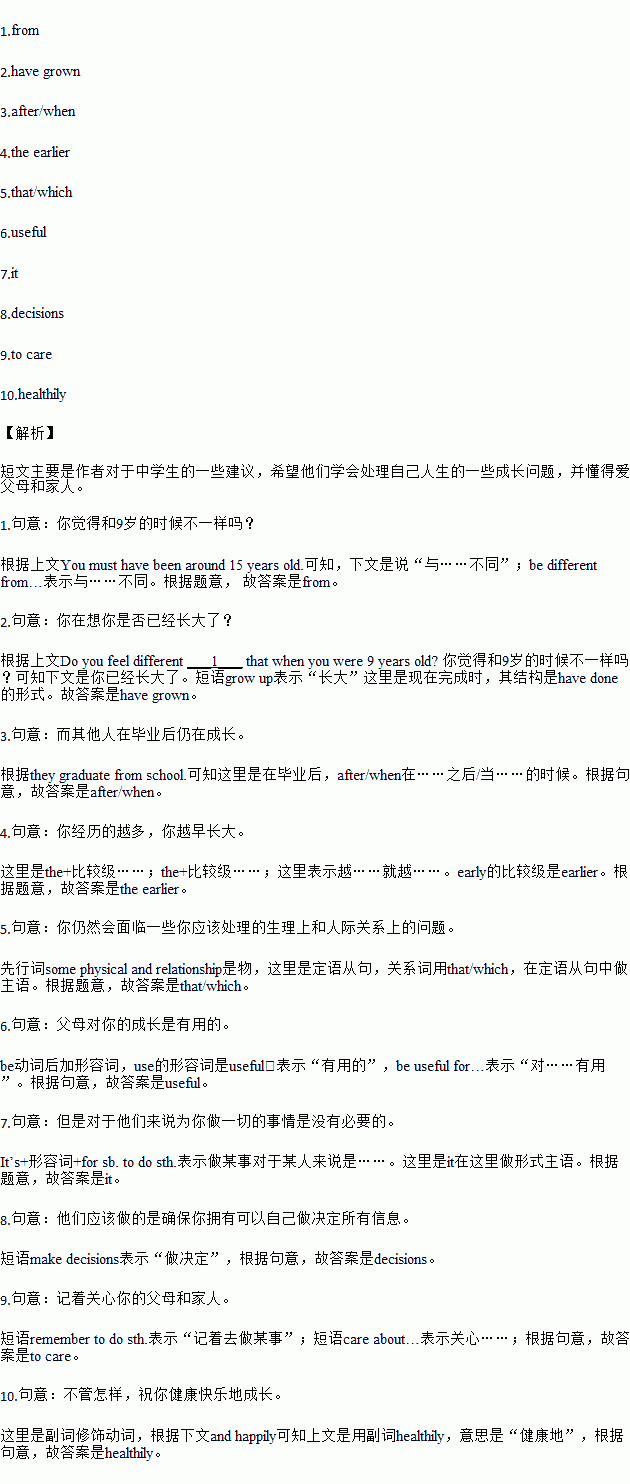题目内容
You must have been around 15 years old. Do you feel different ______ that when you were 9 years old? Are you wondering if you ______(grow)up already? You may be a physical adult before you finish studying. Some people may finish their growing at high school, while others are still growing ______ they graduate from school.
Being a grown?up needs a long time. The more you experience, ______(early)you become a grown?up. Even when puberty(青春期)is over and you think you are an adult, you'll still face some physical and relationship problems ______ you should deal with.
Parents are very ______(use)for your growing, but ______ is not necessary for them to do everything for you. Sometimes you might have your own idea. What they should do is to make sure that you have all the information to make ______(decide)by yourself. Of course you should do it in the right way.
Remember ______ (care) about your parents and families. They are the best support you can have. Anyway, wish you grow up ______(healthy)and happily.
1.______________
2.______________
3.______________
4.______________
5.______________
6.______________
7.______________
8.______________
9.______________
10.______________
 暑假接力赛新疆青少年出版社系列答案
暑假接力赛新疆青少年出版社系列答案
